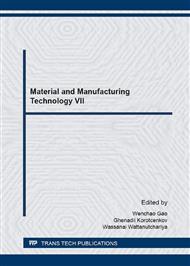p.235
p.242
p.248
p.253
p.261
p.266
p.271
p.276
p.281
Study on the Performance of Orthodontic Self-Drilling Correction Screw of Ti6Al4V and Stainless 316L
Abstract:
In this research, the performance of orthodontic self-drilling correction screw of Titanium alloy (Ti6Al4V) and stainless steel (Stainless 316L) was analyzed by using the finite element method. SolidWorks software was employed to design the 3D models. The dimensions and geometrical parameters of the mini-screw according to ASTM F543-07. The analysis was conducted by using Ansys software. The biomechanical test is carried out that includes the static bending test and the torsion test. Based on the analysis of the results of the tests, the initial stability of the stainless steel screw is slightly higher than the titanium alloy screw. However, in prolonged stress results, attention to interactions with biological organisms from the medical perspective, the titanium bone screw have more advantages. In terms of the maximum load, the titanium alloy screws are better than the stainless steel screws. In terms of stiffness, the stainless steel screws proved superior to the type of titanium alloy. The orthodontic self-drilling correction screw saving of about 30% of the torque and more stable compared to the nonself-drilling type.
Info:
Periodical:
Pages:
276-280
Citation:
Online since:
September 2016
Authors:
Price:
Сopyright:
© 2016 Trans Tech Publications Ltd. All Rights Reserved
Share:
Citation:


